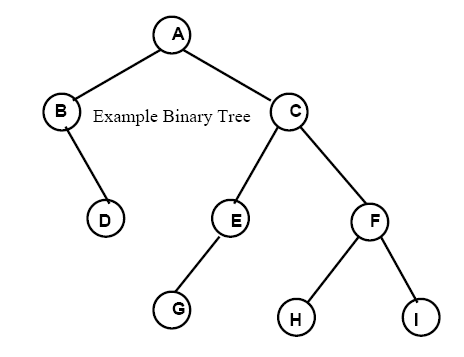Binary Trees
From
A binary tree is is a tree ADT that is restricted to having at most 2 children in each node contained in the tree. As computers generally operated on digital/binary logic, binary trees are very natural and efficient structures. They are useful both as a means of storing and organizing data, and as a means of representing a solution to a problem.
Here is an example binary tree:
Implementation of binary trees
A binary tree can be implemented in two basic ways. One way is a pointer based implementation—using dynamic memory—and the other way is an array based implementation—using static memory.
In a pointer based implementation, a tree node normally consists of three fields. They are usually called Data, Left, and Right. The Data field holds what ever information is to be represented by the tree, while the Left and Right fields are pointers to tree nodes. The links are normally one way: we can go from a parent to a child but not the other way.
In an array based implementation, the root of the tree is stored in position 0. For any node in position r, the left child is found in position 2r + 1 and the right child is found in position 2r + 2. One advantage of an array based implementation is that it is easy to go from a child to a parent: if the child is in location r and r > 0, then (r-1)/2, if r is odd, gives the location of the parent, and (r-2)/2, if r is even, gives the location of the parent. Also, if r > 0 and r is even, then r – 1 is the location of the sibling. And if r > 0 and r is odd, r + 1 is the location of the sibling.

